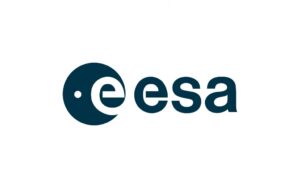

Joined by InCert, itrust consulting, LuxConnect, LuxTrust and SnT, the SES-driven consortium will develop satellite-terrestrial infrastructure and the roadmap for wider European integration, setting the path for next-generation cybersecurity
Luxembourg, 13 July 2021 — The Luxembourg’s Quantum Communications Infrastructure project (LuxQCI), coordinated by the Department of Media, Telecommunications and Digital Policy (SMC) of the Luxembourg Ministry of State, and supported by the European Space Agency (ESA) and the Luxembourg Space Agency (LSA) under the Luxembourg National LuxIMPULSE programme, will create a secure communications shield against cyber threats based on quantum technology. To design the LuxQCI, Luxembourg has put in place a consortium comprising InCert, itrust consulting, LuxConnect, LuxTrust and the University of Luxembourg (SnT), that is led by SES’s fully-owned affiliate SES Techcom.
One of the LuxQCI’s main functions will be to ensure quantum key distribution (QKD), an ultra-secure form of encryption that uses the principles of quantum mechanics. Enabled via satellites, QKD can secure confidential data, power grids, government communications and digital transactions, including against attacks by quantum computers. Once operational, LuxQCI will guarantee the security of digital transactions and of confidential information transfer over geographically dispersed areas. Early users of the infrastructure will be governmental and institutional authorities and business sectors requiring ultra-secure data transmission. QCI will ultimately evolve into a Quantum Internet, linking quantum processors and sensors and enabling an EU-wide distributed quantum computing and communication capability.
The LuxQCI is an integral part of the European Quantum Communication Infrastructure (EuroQCI), an initiative from the European Commission that was officially launched in June 2019, which represents a federation of all the national infrastructures of the 27 EU Member States. Luxembourg was among the first seven Member States that signed this declaration.
As the ultra-secure form of encryption is only possible via a combination of terrestrial and space networks, the cornerstone element for the next-generation cybersecurity LuxQCI will be developed by a consortium of renowned Luxembourg-based entities that combines the relevant expertise of the private sector, research and development community and public agencies. Luxembourg’s first national Quantum Communication Infrastructure will support the country’s ambitions within the EuroQCI strategy, resulting in a roadmap for its implementation.
The LuxQCI project will include among other key objectives the design of the country’s national QCI, integrating both terrestrial and space-based Quantum Key Distribution (QKD) into an innovative hybrid Key Management System (hKMS). It will also plan for the integration of Luxembourg’s national QCI with other European QCI initiatives.
Luxembourg’s national QCI will leverage SES’s extensive expertise in developing relevant technologies, such as QUARTZ. Under this ESA-funded initiative, SES and a consortium of partners have since 2018 been developing an engineering model for the QKD system that allows the generation of encryption keys from space, as well as their secure transmission to users on Earth via laser.
Xavier Bettel, the Luxembourg Minister for Communications and Media said: “The Recovery plan for Europe, which includes the Recovery and Resilience Facility (RRF), aims at repairing the immediate economic and social damage brought about by the coronavirus pandemic. Post-COVID-19 Europe will be greener, more digital, more resilient and better adapted to the current and forthcoming challenges. This pandemic has also clearly shown us the importance of digital technologies in our daily lives. One of the main projects in our Recovery and Resilience Plan is the QCI or Quantum Communication Infrastructure where SES, our European champion in satellite communications, collaborates with the research community and the local ecosystem in order to develop a next-generation, ultra-secure communication infrastructure.”
Pierre Gramegna, Luxembourg’s Minister of Finance commented: “I am pleased to see that the efforts invested into devising Luxembourg’s Recovery and Resilience Plan are yielding results swiftly. The LuxQCI project illustrates how EU funds can be effectively used to contribute to a resilient and future-oriented recovery, and is line with the Government’s budget strategy to maintain high levels of public investment. LuxQCI has the potential to increase the economic attractiveness of Luxembourg by further strengthening the country’s digital infrastructure, and presents promising opportunities for the financial sector.”
Marc Serres, CEO of the Luxembourg Space Agency, said: “ESA and a consortium led by SES are already developing the QUARTZ system for generating cryptographic keys in space and their secure transmission to earth. LuxQCI will integrate this technology, being the next major milestone in building the quantum communications infrastructure. This underscores the complementary roles of space and terrestrial technologies in ensuring globally available and reliable systems of the future. It sets the path to an integrated European infrastructure, and Luxembourg takes a clear lead in this groundbreaking development.”
Steve Collar, CEO of SES, said: “Satellite-enabled cybersecurity is a technology of the future that is being developed now, and is an integral element of reliable quantum communications infrastructures. We could not be more delighted to be driving the development of Luxembourg’s national QCI project with these local partners. The safe and intrusion-resistant data exchange mechanisms developed here will serve as a flagship project that can be replicated on a wider European scale. Luxembourg has the right expertise to deliver on this, as a world-renowned space and financial centre.”

